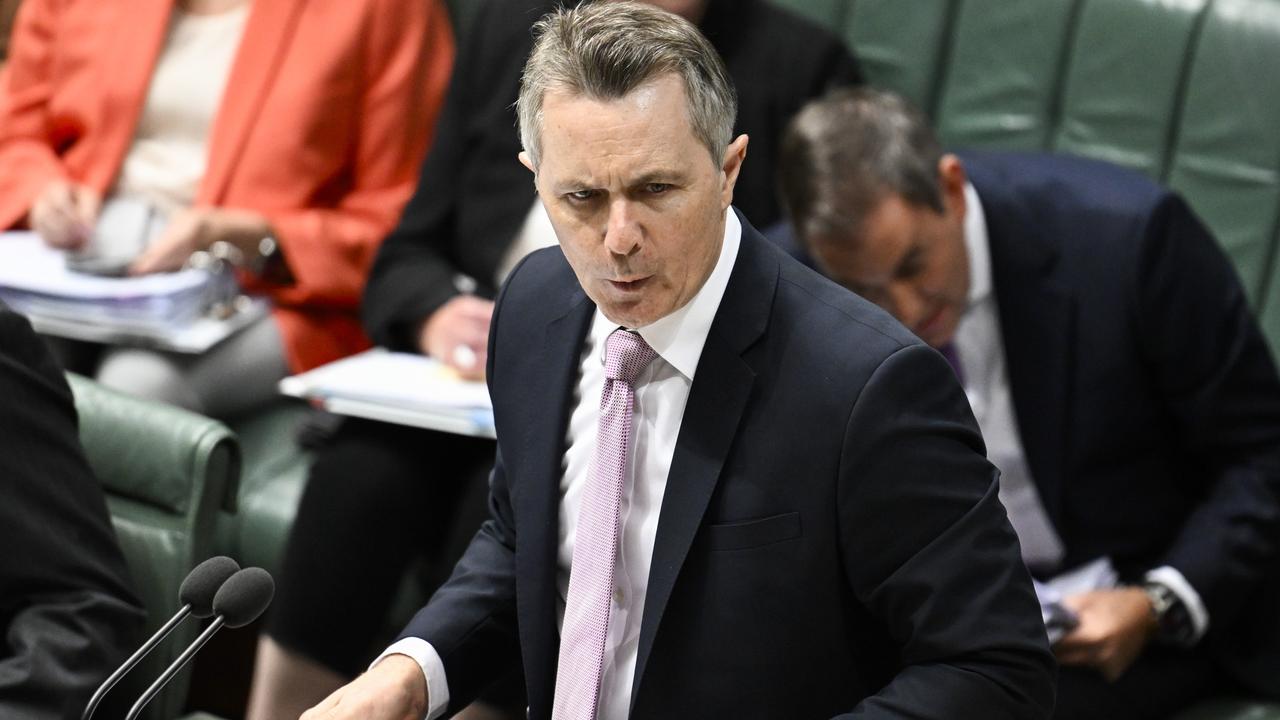Universities don’t win votes — do they?
RADICAL reforms to higher education in Australia will hit students particularly hard.

UNIVERSITIES don’t win votes.
As University of Melbourne vice-chancellor Glyn Davis said in his 2012 Boyer lectures: “While a passionate minority advocate fervently for universities, and most Australians want a first-class education for their children, university policy has not proven a vote-switching issue.”
That was likely front of mind when, in last week’s budget, the Abbott government unleashed the most radical reform agenda for higher education in decades.
The reforms will hit students particularly hard, although the extent to which is yet to be revealed. Some talk of $200,000 debts; others say that’s being sensationalist.
An estimated 7000 students took to the streets around the nation last Wednesday; there’s been a spate of protests since; and many more can be expected in coming months. And while Liberal politicians dismiss the protesters as a small posse of left-wing radicals, there is a growing chorus of concern about what the reforms might mean for young lives.
Its package of financial imposts will see the government not only allow universities to charge what they want — a move that has never before been attempted by any modern western democratic nation — it will also reduce its share of the cost of tuition by an average of 20 per cent., but higher for some subjects such as engineering and science.
Those two factors alone will dramatically increase student fees, but the government also proposes to impose interest on students tuition loans based on the 10-year government bond rate, as well as reduce the income threshold at which repayments start. Both changes would apply to new and existing loans.
“We are very concerned about high interest rates on student repayments,” says Davis. “If people come out of university with very high debt, it affects their other choices, such as starting a business or a family or buying a home. It has social consequences.”
The government’s changes will not only hit students — and universities — hard financially, it also intends to throw open the higher education sector to market forces by extending its teaching subsidies to private colleges and TAFES, much in the way Medicare covers care in private hospitals, and also offer them for sub-degree programs such as diplomas. In one of the budget’s few expenditure items, education minister Christopher Pyne estimates this will attract an additional 80,000 students a year at a cost of $820 million over three years.
Pyne is hoping that the inclusion of private colleges will create more choice and a more dynamic higher education market, while placing downward pressure on student fees.
But Peter Coaldrake, vice-chancellor of the Queensland University of Technology, says while good in theory, its unlikely to happen in practice.
“There might be some price competition for the low-hanging fruit, such as business courses, but it’s incredibly unlikely we will see prices drop as the minister suggests,” says Coaldrake.
Vice-chancellors are also frustrated not only by the lack of consultation, but the fact many of the changes will apply to current students, with no grandfathering arrangements.
As Sandra Harding, the chairwoman of peak group Universities Australia has said the new system takes effect ostensibly from January 1, 2016, but with a May 14, 2014 start date, students enrolling from last week can be subject to fee hikes from 2016.
She argues that universities have to let students know what charges they will be up for in 2016 but have no detail or framework in which to set prices.
The government’s rationale for this dramatic cost shifting from the taxpayer to the individual is the private benefit gained from a university degree. As Pyne has repeatedly said over the past few weeks: graduates earn, on average, 75 per cent more than people who don’t go to university.
“Rather than criticising the government, (student protesters) should be buying a bunch of flowers and a box of chocolates and visiting a home near them where they know someone hasn’t been to university, knocking on the front door and saying thank you very much for paying for my education,” Pyne told radio host Alan Jones on Wednesday.
Indeed, there are plenty of studies that demonstrate a significant and sustained income premium as a result of a university education, estimated to be between $500,000 and $1.5 million over a lifetime. It’s a financial benefit that has remained remarkably stable over decades — while the wider population has less than tripled since the 1950s, the domestic university student population has increased twenty-six-fold.
As Andrew Norton, co-author of a recent government-commissioned report on university places and funding, argued back in 2012: “Since most graduates do well out of higher education, enjoying good jobs and high social status, most subsidies are for courses that students would take anyway. Tuition subsidies therefore merely redistribute income to students and graduates, at the expense of the general public — particularly those who do not go to university.”
STUDENTS are not alone in voicing there concerns about the impacts of the changes.
Ross Milbourne, vice-chancellor of the University of Technology, Sydney lashed out at Pyne’s comments to Jones on Wednesday.
“That’s bullshit. The rate of return you get from funding a university student for their education is more than paid back through their increased salaries and the tax system when they start working,” Professor Milbourne said.
“That rate of return is way above the rate of return on any other investment the government can make. Instead of getting bunches of flowers and boxes of chocolates from the current students, it’s the taxpayers who should be thanking the students for doing the hard work — for undertaking the study that can protect Australia’s international competitiveness.”
Others list better parenting, higher levels of community engagement, better health outcomes and lower rates of smoking and obesity among other public benefits of higher education.
Leo Goedegebuure, director of the LH Martin Institute at the University of Melbourne agrees. “Irrespective of the ideology of whether markets are a good way of coordinating the education system or not, you can’t ignore the fact there are significant benefits from a highly educated population.
“That is so well documented; we all know it. It’s just not a sensible way out of a funding dilemma.”
Goedegebuure and others also point to the fact that by global standards Australian students carry among the highest proportion of the cost of their university education — currently the sixth highest in the OECD.
Whether higher prices will affect demand for university degrees is not known.
“We don’t know whether poorer people will be willing to take on that debt or not,” says Davis, adding that the likelihood of a repeat of the US education bubble — $1 trillion in debt, compound interest, poor job outcomes — is unlikely given the safety net of the Higher Education Loan Program, more commonly known as HECS.
The system, introduced in the 1980s, sees debt repaid through the tax system only after graduates earn a minimum income threshold, currently $51,000. Although the government wants to reduce that as well.
“It’s not a shift to the American model, but it is a profound change. There is a very real risk that just the thought of higher debt will put people off,” Davis says. “But there have been warnings that could happen since the introduction of HECS and it hasn’t eventuated. But there has to be a price point where that kicks in. We just haven’t got there yet.”
ONE thing is for sure. The reforms will not get through Parliament’s upper house unscathed.
“What gets through the Senate will define how this package ends up,” says Davis. “So a handful of independent senators become the architects of higher education policy. I assume the government has thought this through carefully and has a plan. But the horsetrading will have nothing to do with higher education per se.”
Coaldrake says that maybe the belief that universities don’t win votes may finally be put to the test. With close to 40 per cent of young Australians now undertaking degrees, there is a lot of vested community interest, just as there is among aspirational parents.
“There will be a political backlash beyond the immediate bunfight reaction,” says Coaldrake. “I think it will be a slow burn issue as people digest the consequences of this.”
One thing is for sure, when Tony Abbott told vice-chancellors at the beginning of 2012 that the government would not mess with higher education policy — it would be treated with “benign neglect” — nothing could have been further from the truth.


